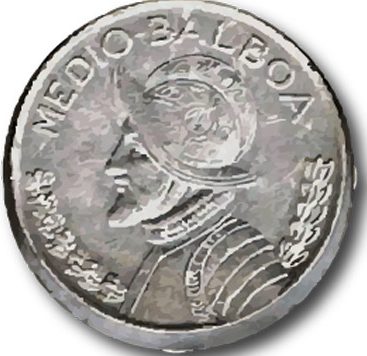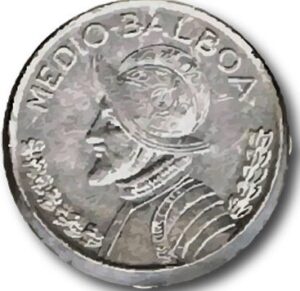

McGraw-Hill Education
The balboa coin
If you have the opportunity to visit Panama, you won’t have to worry about exchanging currency before you travel because the paper currency of Panama is the U.S. dollar! While the balboa is the official currency of Panama, the balboa is only available in coins, and it is issued at the United States Mint. Starting in 1929, these coins were made the same metal, shape, size, and value as coins of the United States. The only difference is the image on the coins. Can you guess whose image is on most balboa coins? The U.S. dollar and the balboa have the same value and are used interchangeably. That is, the exchange rate is fixed at 1:1. One dollar equals one balboa. Both the United States Federal Reserve Board and the authorities of Panama oversee the funds. So when you vacation in Panama, you don’t need to go through the hassle of exchanging your money!
The balboa replaced the Colombian peso in 1904, following Panama’s independence from Colombia in November, 1903. Panama named its new currency after Vasco Núñez de Balboa, the Spanish explorer who discovered the Pacific Ocean. The new coinage system was developed to be acceptable both to Panama and to the United States, because construction of the Panama Canal was soon to begin. To make it easier to pay workers, Panama’s government established the exchange rate of 1:1 between Panamanian currency and United States currency. Paper money and coins from the United States were used as well as balboa coins. Throughout the years, various denominations of coins have been produced, such as ½ centésimo, 1¼ centésimos, 2½ centésimos, and 5 balboas. Between 1971 and 1985 the United States Mint even issued sterling silver 20-balboa coins, which were at the time the largest coins in the world! Only once, in 1941, did the government attempt to print paper balboas. The idea was a failure and they were canceled almost immediately, earning them the name “The Seven Day Dollar.”
The most common Panamanian coins in circulation today are listed in the table below. Use your Spanish and the information above to translate into English the values of the balboas.
Explore More:
1. Look on the Internet for images of balboa coins, as well as additional interesting information. Then put together a PowerPoint® presentation to share with your class.
2. Money is just one example of the close ties between the United States and Panama. Other examples include the Panama Canal and the fact that more than 25,000 retired United States citizens reside in Panama. Using Spanish-language resources, investigate other cultural, historical, and economic ties between the two nations. Then prepare a brief report that summarizes and explains these ties.
3. Panama is not the only Spanish-speaking country to have “dollarized” its money. Find out the two other countries that did so. What was the name of the local currency that was replaced by the U.S. dollar in each nation? In what year did this change take place, and why?
4. Notice in the table that Urracá is on Panama’s one-centésimo coin. Do some research using Spanish-language resources to learn who he was and what role he played in Panama’s history. Prepare a summary in Spanish to present to your class.